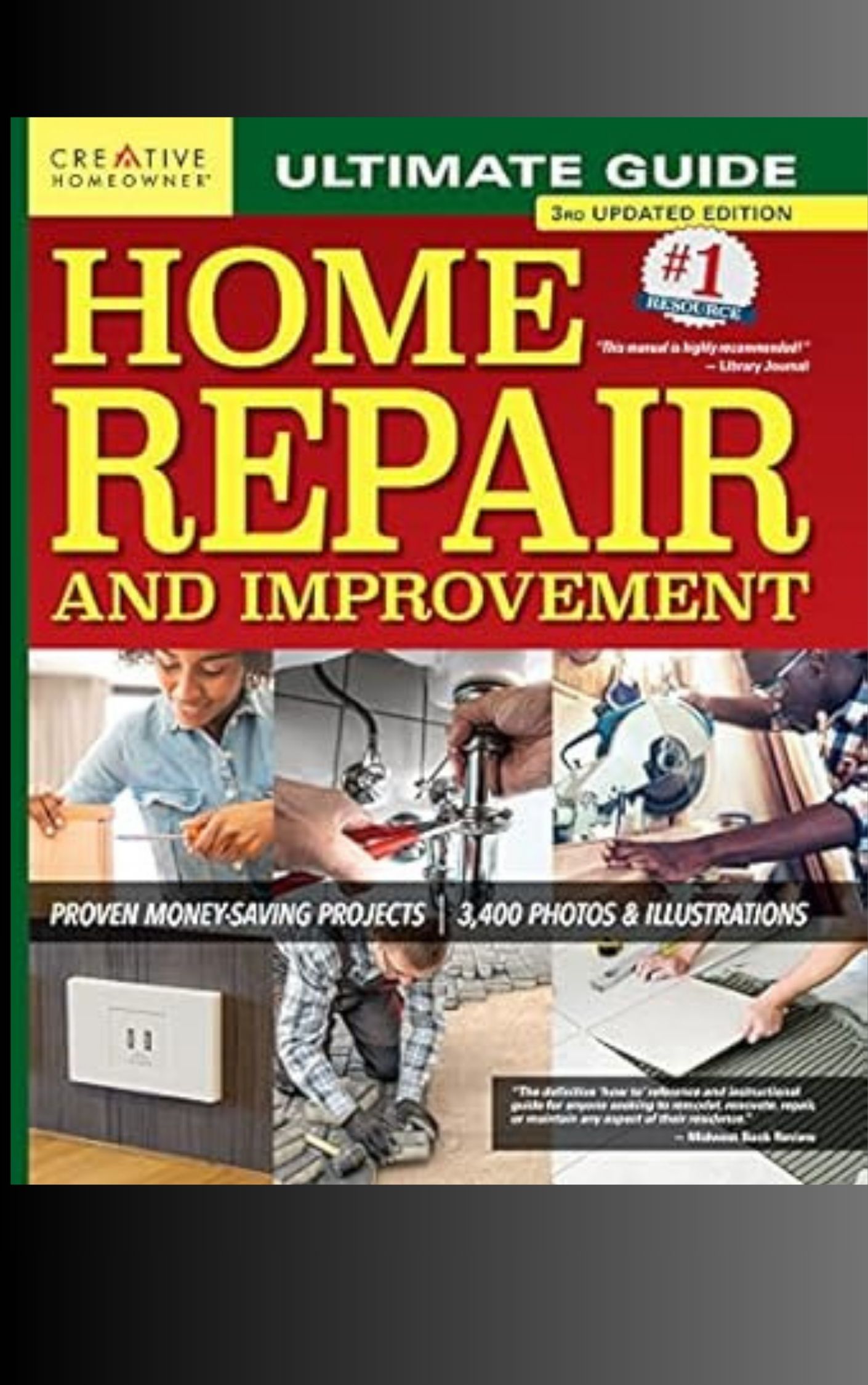Balancing short-term costs with long-term value in renovation choices requires careful planning and prioritization. Start by addressing essential upgrades that impact safety and functionality, such as electrical, plumbing, and structural issues. Invest in high-quality materials and energy-efficient solutions that offer long-term savings, despite higher upfront costs. Consider the potential return on investment for each renovation, focusing on projects that improve resale value like kitchen and bathroom updates. Evaluate the cost-benefit of DIY versus professional work, and explore financing options to spread costs over time. By weighing immediate expenses against future benefits, homeowners can make informed decisions that maximize their renovation's value.
Assessing Your Renovation Goals
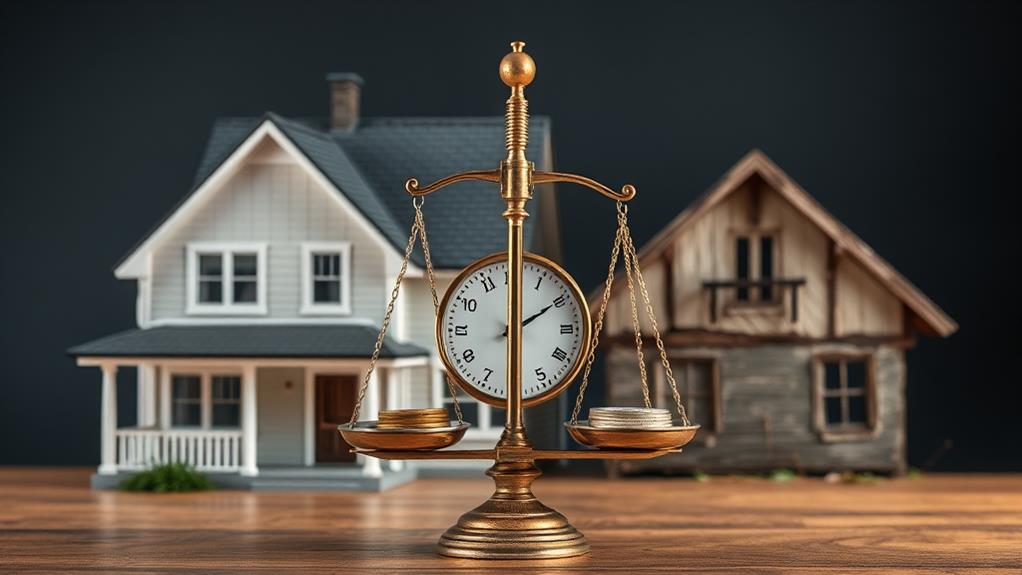
Before embarking on any renovation project, it's crucial to clearly define your goals. Are you renovating to increase your home's resale value, improve functionality, or enhance your living experience? Understanding your primary objectives will guide your decision-making process and help prioritize investments.
Consider both short-term needs and long-term plans. If you intend to sell within a few years, focus on improvements that offer the highest return on investment, such as kitchen and bathroom updates. For long-term residence, emphasize personal preferences and lifestyle enhancements.
Assess your budget realistically, factoring in potential unexpected costs. Determine which areas require immediate attention and which can be addressed in phases. Prioritize structural and safety issues over purely aesthetic changes.
Research current market trends and consult with local real estate professionals to understand which renovations are most valued in your area. This insight can help balance personal desires with marketability.
Prioritizing Essential Upgrades
When prioritizing essential upgrades, homeowners should zero in on improvements that address safety, structural integrity, and core functionality. These fundamental aspects not only ensure a secure living environment but also protect the property's long-term value.
Start by addressing any electrical, plumbing, or HVAC issues, as these systems are critical to daily comfort and safety.
Next, focus on structural elements like the roof, foundation, and load-bearing walls. Neglecting these areas can lead to costly damage over time. Water-related problems, such as leaks or poor drainage, should be tackled promptly to prevent mold growth and structural deterioration.
Energy efficiency upgrades, including insulation, weatherstripping, and modern windows, offer both immediate comfort benefits and long-term cost savings. Consider updating outdated appliances with energy-efficient models to reduce utility bills.
Cost-Benefit Analysis of Materials
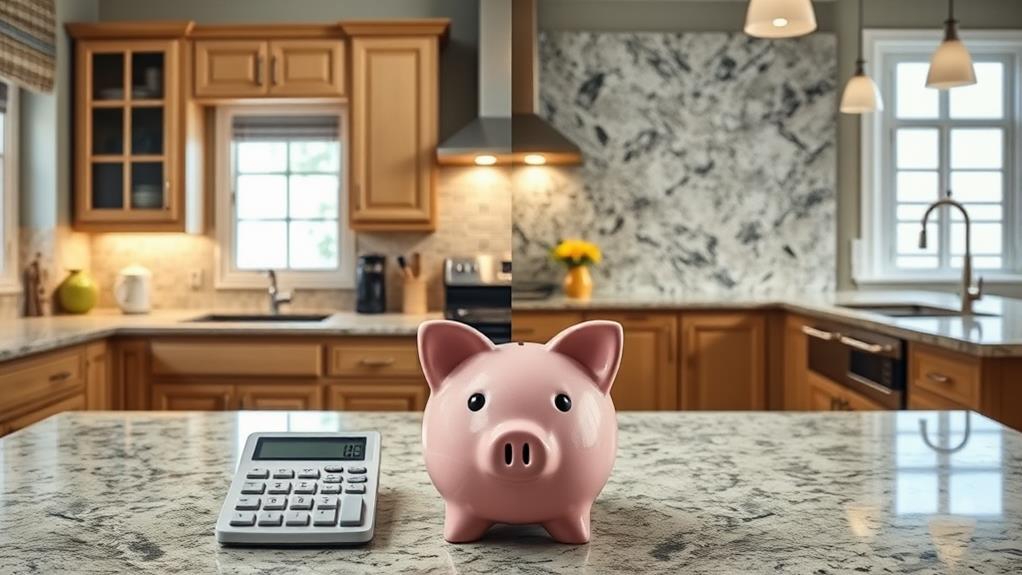
A thorough cost-benefit analysis of materials is crucial for making informed decisions during home renovations. When evaluating materials, consider both upfront costs and long-term value. Factors to assess include durability, maintenance requirements, energy efficiency, and potential impact on resale value.
High-quality materials often come with a higher initial price tag but can offer significant savings over time. For example, premium insulation may cost more initially but can lead to substantial energy savings. Similarly, durable flooring options like hardwood or porcelain tile may be more expensive upfront but require less frequent replacement than cheaper alternatives.
Consider the specific needs of each area in your home. In high-moisture environments like bathrooms, investing in water-resistant materials can prevent costly damage and repairs. For exterior renovations, weather-resistant options may offer better protection and longevity.
Research and compare different brands and suppliers to find the best value. Sometimes, mid-range options provide an optimal balance between cost and quality. Additionally, consider the potential for DIY installation to reduce labor costs, but be realistic about your skills to avoid costly mistakes.
Energy Efficiency Investments
How can energy efficiency investments enhance your home renovation project? These upgrades can significantly reduce long-term energy costs while improving comfort and increasing property value. Key areas to consider include insulation, windows, HVAC systems, and lighting.
Properly insulating walls, attics, and crawl spaces can dramatically reduce heating and cooling expenses. High-performance windows with low-E coatings and argon gas fill minimize heat transfer, further lowering energy bills.
Upgrading to energy-efficient HVAC systems, such as heat pumps or high-SEER air conditioners, can yield substantial savings over time. LED lighting and smart home technologies offer additional energy-saving opportunities. Solar panel installation, while initially costly, can provide long-term benefits through reduced electricity bills and potential tax incentives.
When evaluating energy efficiency investments, consider the payback period – the time it takes for energy savings to offset the initial cost. Some upgrades, like insulation and LED lighting, often have quick payback periods. Others, such as solar panels or geothermal systems, may take longer but offer greater long-term savings. Balance these factors with your budget and long-term plans for the property to make informed decisions.
Resale Value Considerations
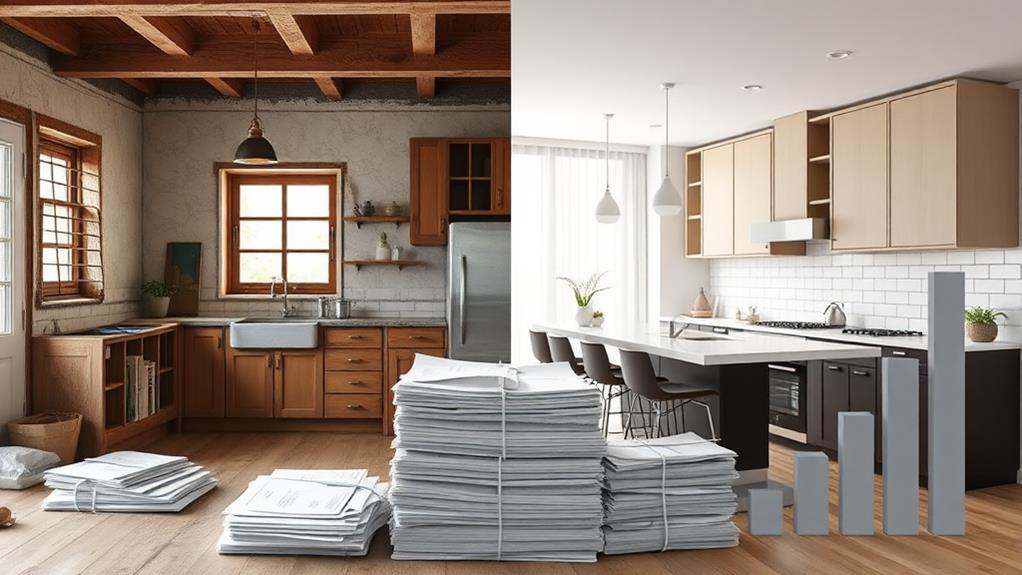
While energy efficiency upgrades can significantly impact a home's value, other renovation choices also play a vital role in determining resale potential. Homeowners should consider market trends and buyer preferences when planning renovations.
Kitchen and bathroom updates consistently offer strong returns on investment, with modern appliances, countertops, and fixtures appealing to potential buyers. Open floor plans remain popular, potentially increasing a home's perceived spaciousness and versatility.
Curb appeal is crucial for attracting buyers, making exterior improvements like landscaping, fresh paint, and an updated front door worthwhile investments. Adding usable square footage through finished basements or attic conversions can substantially increase a home's value. However, highly personalized or niche renovations may limit buyer appeal.
It's essential to maintain a balance between personal preferences and market demands. Neutral color schemes and timeless design elements often resonate with a broader range of buyers. Additionally, addressing structural issues and maintaining core systems like plumbing and electrical should take precedence over purely aesthetic upgrades. By prioritizing renovations that align with both current living needs and future resale potential, homeowners can maximize their property's long-term value.
DIY Vs Professional Work
Many homeowners face the decision between tackling renovation projects themselves or hiring professional contractors. This choice can significantly impact both short-term costs and long-term value.
DIY renovations often appeal due to potential cost savings, allowing homeowners to invest sweat equity instead of cash. However, the quality of work and time required must be carefully considered.
Professional contractors bring expertise, efficiency, and often warranties for their work. While more expensive upfront, their services can ensure proper execution, adherence to building codes, and potentially higher-quality results. This can translate to better long-term value and fewer future repairs.
The complexity of the project should guide the decision. Simple tasks like painting or minor repairs may be suitable for DIY, while structural changes, electrical work, or plumbing should typically be left to professionals. Homeowners should honestly assess their skills, available time, and the potential impact on the home's value. Mistakes in DIY work can be costly to rectify and may decrease property value.
Ultimately, the right balance between DIY and professional work depends on the specific project, budget constraints, and the homeowner's capabilities.
Financing Options for Renovations

When undertaking a renovation project, securing appropriate financing is often a crucial step for homeowners. Several options are available, each with its own advantages and considerations.
Home equity loans and home equity lines of credit (HELOCs) allow homeowners to borrow against their property's value, typically offering lower interest rates than personal loans. These options are suitable for larger renovations and may provide tax benefits.
Personal loans, while generally having higher interest rates, offer quick approval and funding without using your home as collateral. For smaller projects, credit cards can be a convenient option, especially those offering introductory 0% APR periods. However, they often have high interest rates after the promotional period ends.
Cash-out refinancing allows homeowners to replace their existing mortgage with a larger one, using the difference for renovations. This option can be beneficial if current interest rates are lower than your existing mortgage rate. Government-backed renovation loans, such as FHA 203(k) loans, provide financing for both the purchase and renovation of a home, which can be particularly useful for fixer-uppers. Carefully consider each option's terms, interest rates, and long-term financial impact before deciding.
Phased Renovation Strategies
Phased renovation strategies offer an alternative approach for homeowners who may not have the financial resources or time to complete a full-scale renovation at once. This method involves breaking down the renovation project into smaller, manageable stages that can be completed over an extended period.
By prioritizing renovations based on urgency, budget, and potential return on investment, homeowners can tackle projects incrementally. This approach allows for better financial planning and minimizes disruptions to daily life. Start with essential repairs and updates that address safety concerns or improve energy efficiency. These initial steps often provide immediate benefits and cost savings.
Subsequently, focus on areas that significantly impact home value, such as kitchen and bathroom upgrades. As budget allows, move on to aesthetic improvements and less critical updates. This strategy enables homeowners to spread costs over time, potentially avoiding high-interest loans or depleting savings. It also provides flexibility to adjust plans based on changing needs or market conditions.
Phased renovations require careful planning and coordination to ensure cohesiveness in the final result. Consider future phases when making design decisions to maintain a unified look throughout the home.
Future-Proofing Your Home
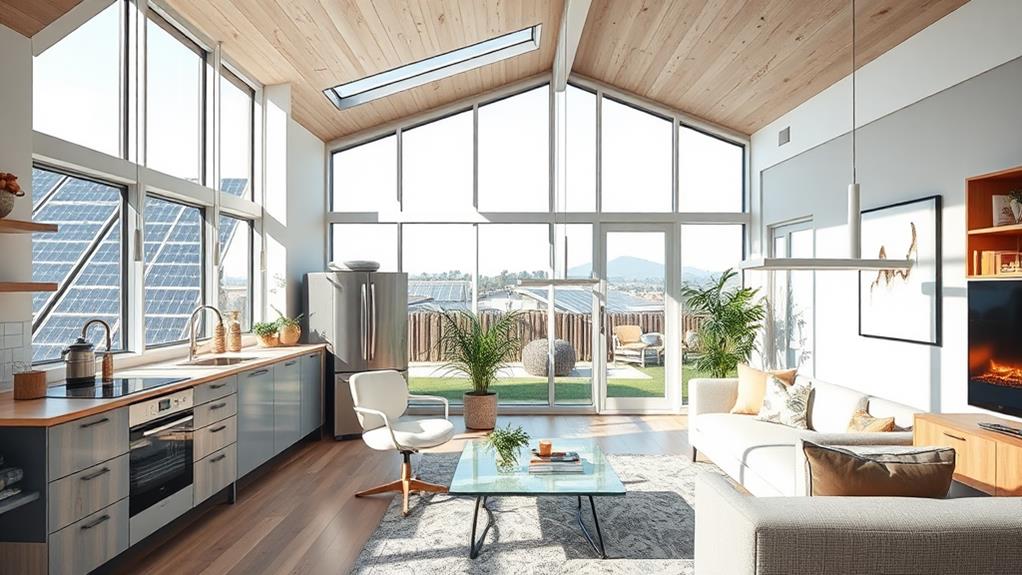
Future-proofing your home involves anticipating and preparing for future technological advancements, lifestyle changes, and environmental shifts. This approach ensures your renovation investments remain relevant and valuable in the long term. Key considerations include flexible living spaces that can adapt to changing needs, energy-efficient systems to reduce long-term costs, and smart home technology integration for improved convenience and security.
Incorporate universal design principles to accommodate aging-in-place and potential mobility issues. Install conduits and wiring infrastructure to support future technological upgrades. Choose durable, low-maintenance materials that withstand wear and environmental factors. Consider implementing sustainable features like solar panels, rainwater harvesting systems, and energy-efficient appliances to reduce utility costs and environmental impact.
Plan for potential climate changes by improving insulation, installing impact-resistant windows, and implementing flood mitigation measures where applicable. Prioritize upgrades that enhance your home's resilience to natural disasters and extreme weather events. By future-proofing your home, you not only increase its long-term value but also create a more comfortable, efficient, and adaptable living space that can evolve with your needs and technological advancements.
Hidden Costs and Contingencies
Behind every renovation project lurk hidden costs and potential contingencies that can significantly impact your budget and timeline. Unforeseen structural issues, such as water damage or electrical problems, often emerge once walls are opened. These discoveries can lead to additional repairs and expenses not initially factored into the budget.
Permit fees and code compliance costs are frequently overlooked. Depending on your location and the scope of work, obtaining necessary permits can be time-consuming and expensive. Additionally, bringing older homes up to current building codes may require substantial investments.
Labor shortages and material price fluctuations can also affect project costs. Delays in material delivery or difficulty finding skilled workers may extend the renovation timeline, potentially increasing labor costs. It's crucial to build a contingency fund of 10-20% of the total budget to cover unexpected expenses.
Hidden costs may also include temporary living arrangements if the renovation renders your home uninhabitable. Factor in costs for storage units, eating out more frequently, or short-term rentals. By anticipating these potential expenses and building flexibility into your budget, you can better manage the financial aspects of your renovation project.
Frequently Asked Questions
How Do I Handle Unexpected Issues During Renovation Without Blowing My Budget?
To handle unexpected issues during renovation without blowing your budget, prioritize essential repairs, seek multiple quotes, consider DIY options when safe, negotiate with contractors, use cost-effective materials, and maintain a contingency fund for emergencies.
What Permits Are Required for Different Types of Home Renovations?
Navigating the permit maze can be daunting, but it's crucial. Common renovations requiring permits include structural changes, electrical work, plumbing modifications, and additions. Always check with your local building department for specific requirements in your area.
How Can I Minimize Disruption to Daily Life During Extensive Home Renovations?
To minimize disruption during extensive home renovations, plan thoroughly, create a temporary living space, communicate regularly with contractors, establish a realistic timeline, prioritize essential areas, and consider temporary relocation for major projects. Maintain a flexible attitude throughout the process.
Are There Tax Incentives or Rebates Available for Certain Renovation Projects?
Ironically, the government wants to renovate your wallet too! Yes, various tax incentives and rebates exist for energy-efficient upgrades, historic preservation, and accessibility improvements. Check with local authorities and energy providers for specific programs in your area.
How Do I Find Trustworthy Contractors and Avoid Renovation Scams?
To find trustworthy contractors and avoid scams, research thoroughly, check licenses and insurance, read reviews, ask for references, and obtain multiple detailed quotes. Always verify credentials and never pay full amount upfront. Trust your instincts when evaluating potential contractors.
Conclusion
The tapestry of home renovation weaves together immediate needs and future aspirations. Like a master architect balancing form and function, homeowners must navigate the delicate equilibrium between short-term expenses and long-term value. By carefully considering each renovation decision, from energy-efficient upgrades to resale-boosting improvements, a home can transform into a sanctuary of both comfort and investment. With thoughtful planning and strategic choices, the renovated space becomes a testament to foresight and fiscal prudence.

